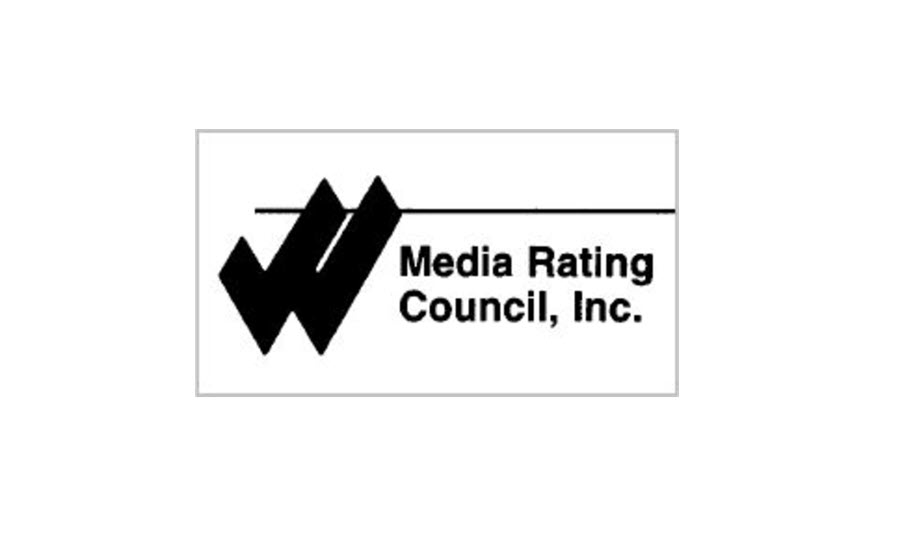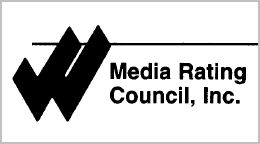MRC Sets New Standards For Cross-Media Measurement

The Media Rating Council on Wednesday issued a final version of its Cross-Media Audience Measurement Standards, a milestone that will help media buyers figure out how to best use all the forms of video available to reach target consumers.

The 73-page document spells out the definition of viewable impressions, sets rules for not counting invalid traffic, lets advertisers know how much of their commercials are being viewed by consumers and whether or not the sound was turned while the ad played.
Measurement companies will now start to adjust their methodologies to measure up to the standard and audits could begin as early as next year in which the MRC will determine compliance and accreditation in order to assure media buyers and sellers that they’re getting an accurate picture of how many people are seeing video ads.
“I’m calling it 73 pages of love. It’s the largest standard we’ve ever put out. But it’s also a very complex thing to standardize and the goal is to build a common set of metrics, processes and disclosures to put all these forms of video on an equal playing field for measurement and counting purposes,” said George Ivie, CEO and executive director of the MRC.

“Advertisers are putting ads in these different environments and they want to be able to measure them in an apples-to-apples way and track how they’re measured across the environments,”Ivie said. “So there are a lot of things that this standard does to help with setting the ground rules for measuring fairly across these platforms.”
The MRC has been working on its cross-media standard for about two year. There were about 175 companies involved and 300 people in the working group. A draft of the standards was released in March. That was followed by a 60-day public comment period.
Howard Shimmel, president of Janus Strategy and Insights and former chief research officer at Turner Broadcasting, said the standard was most likely to impact media planning and post campaign measurement.
Broadcasting & Cable Newsletter
The smarter way to stay on top of broadcasting and cable industry. Sign up below
“It makes more sense from a cross-platform reach and frequency planning perspective to have a consistent way to count exposure,” Shimmel said. Marketers might also prefer having a common metric to put into the marketing mix modeling.
“But then there’s the question of whether the market will support the research budgets necessary,” he said.
The biggest change that was made in the standards from the draft is the way duration of viewing is weighted. In the draft, viewing was weighted based on what proportion of a 30-second ad was viewed. In the final standard, viewing is weighted based on the actual length of the ad.
Ivie said there was controversy over measuring how long an ad was watched. That provision won’t kick in until 2021.
“If I’m an advertiser or an agency, I want to know how often and how long people lingered with my ad and how many times people saw the whole message or partial message. This helps answer that question,” he said.
There are some that believe that the duration weighting will help traditional TV, because commercials are always fully viewable. Others believe it will favor shorter ads, because it’s easier to get a viewer to watch five seconds of a five-second spot than to keep them tuned into a 30-second commercial.
“We’re not trying to say that makes the ad message more effective,” Ivie said.
“One important thing to understand on duration weighting is that we don’t view them as an end in themselves,” added David Gunzerath, senior VP and associate director at the MRC. “That metric’s greatest importance is going to be as an analytical tool to help ultimately evaluate ad effectiveness and ad outcomes through other standards that we’re developing in those areas.”
The MRC doesn’t think that any of the companies in the video measurement business currently are up to all of the new standards.
“We think everybody is going to have to make adjustments,” said Ivie. “We’re now going to be saying to the vendors out there OK, you have assessment criteria published. Please go adopt this and we want to audit and accredit you against it.”
Existing measurement products such as Nielsen’s Total Audience Ratings and Comscore’s Multi Platform will likely need to be tweaked in order to be accredited, he said. Other measurement companies, including Alphonso, Samba TV and TVision, will also want to be audited and accredited.
“They’ve been keeping tabs all along the way on what’s going into the standard and what will ultimately be required of them and engineering toward them,” he said.
Some of the key provisions in the final standards are:
- Viewable Impressions
For combined deduplicated cross-media video measurement, a viewability qualification threshold of 100% of pixels on screen for at least two continuous seconds must be utilized for both digital and linear components. Viewable impressions are the minimum required qualifying measurement unit for cross-media advertising Reach, Frequency and GRP.
- Sophisticated Invalid Traffic Filtration
Cross-media audience measurement must be based on filtration inclusive of general and sophisticated Invalid Traffic.
- Duration
For audience measurement of any kind, including cross-media, average Viewable Duration reporting (based on unduplicated viewable duration) is required, with viewable completion audience metrics also required in cross-media video measurement. The Standard provides for flexibility in duration reporting based upon criteria such as actual and quartile.
- Consideration of Audio
Presence of audio must be considered in determining a Viewable Video Impression (and input into GRP) for cross-media video. Measurement organizations should separately report Viewable video duration that is also audible (non-mute or non-zero) where this can be measured.
“This is a big document and it's impossible to make everybody happy. But we think this helps the preponderance of the industry,” Ivie said.
Jon has been business editor of Broadcasting+Cable since 2010. He focuses on revenue-generating activities, including advertising and distribution, as well as executive intrigue and merger and acquisition activity. Just about any story is fair game, if a dollar sign can make its way into the article. Before B+C, Jon covered the industry for TVWeek, Cable World, Electronic Media, Advertising Age and The New York Post. A native New Yorker, Jon is hiding in plain sight in the suburbs of Chicago.

